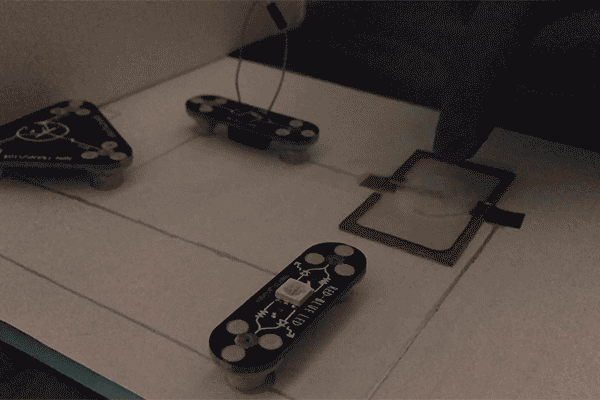
Image credit: Will (Yangxiaolu) Cao, Kara Manke, Duke University
(www.futurism.com)

(www.futurism.com)
Scientists Just Successfully Programmed Bacteria Using Synthetic Genes
by Dom Galeon on October 9, 2017
https://futurism.com/scientists-just-successfully-programmed-bacteria-using-synthetic-genes/
Bacteria Growth
Nature is, perhaps, the most efficient builder there is. Since life began, examples of inorganic components working with organic material to make material composites abound. Now, scientists from Duke University have effectively harnessed nature’s construction abilities to develop 3D materials. In a study published in the journal Nature Biotechnology, the researchers prove it’s possible to program bacteria to build a device that functions as a pressure sensor.
Growing materials using cellular or bacterial process isn’t new, but the way the Duke researchers harnessed this incredible ability is quite novel. Previous attempts were limited to just 2D structures and depended heavily on external control to make bacteria grow. The new research, however, showed that its entirely possible to let nature do its thing.
“Nature is a master of fabricating structured materials consisting of living and non-living components,” researcher Lingchong You, a Paul Ruffin Scarborough Associate Professor of Engineering at Duke, said in a press release. “But it is extraordinarily difficult to program nature to create self-organized patterns. This work, however, is a proof-of-principle that it is not impossible.”
Basically, You’s team programmed a genetic circuit (or a biological package of instructions) into the bacteria’s DNA. This produced a protein that allowed its own expression in a positive feedback loop, causing it to grow into a dome-shaped bacterial colony until it ran out of food. The bacteria also released small molecules that worked as messengers, which were capable of diffusing into the environment. Once the bacterial colony reached its critical threshold, it began producing two more proteins — one stopped growth, while the other worked as a biological Velcro that could latch into inorganic materials.
Biological Devices
You’s team managed to turn their hybrid structure into a pressure sensor. They let the bacteria’s biological Velcro proteins latch onto gold nanoparticles that formed a shell as big as the average freckle. They then connected LED lights via copper wiring on identical dome structures, which were placed opposite each other, sandwiched between separate membranes. When pressed, a deformation increased the conductivity of the domes and lit the LEDs.
“In this experiment we’re primarily focused on the pressure sensors, but the number of directions this could be taken in is vast,” first author Will (Yangxiaolu) Cao explained. “We could use biologically responsive materials to create living circuits. Or if we could keep the bacteria alive, you could imagine making materials that could heal themselves and respond to environmental changes.” A number of other studies have shown that it’s quite possible to program cellular DNA, the most popular of these have allowed for the development of DNA computers and storage devices that use genetic material. You’s team, however, showed that it’s possible to develop 3D materials using an entirely natural process. At the very least, this could become a more efficient and cost-effective fabrication method. The size and shape of the bacterial dome can also be controlled by altering the properties of the porous membrane where they are grown.
“We’re demonstrating one way of fabricating a 3-D structure based entirely on the principal of self-organization,” researcher Stefan Zauscher said in the press release. “That 3-D structure is then used as a scaffold to generate a device with well-defined physical properties. This approach is inspired by nature, and because nature doesn’t do this on its own, we’ve manipulated nature to do it for us.”

(www.steemitimages.com)
Hi! I am a robot. I just upvoted you! I found similar content that readers might be interested in:
https://futurism.com/scientists-just-successfully-programmed-bacteria-using-synthetic-genes/
Downvoting a post can decrease pending rewards and make it less visible. Common reasons:
Submit